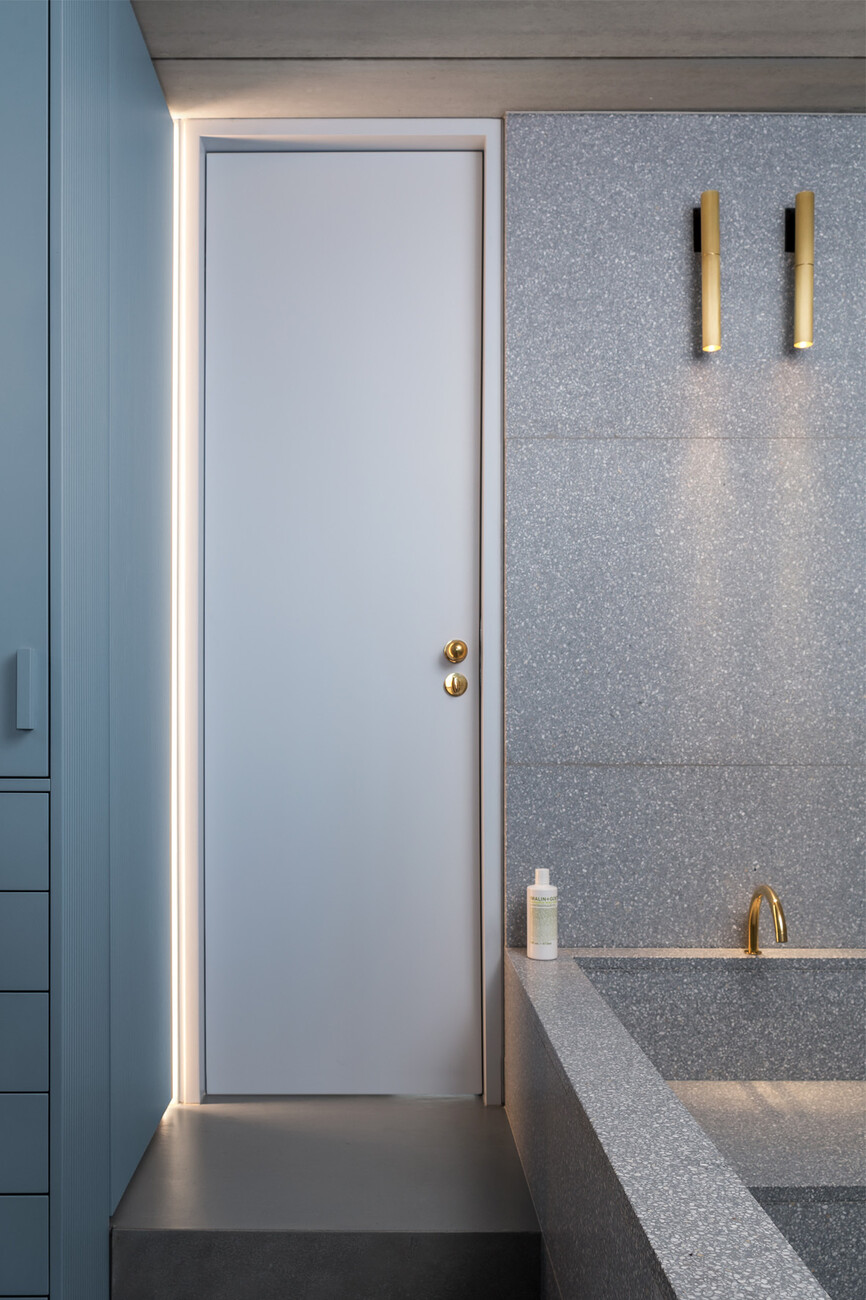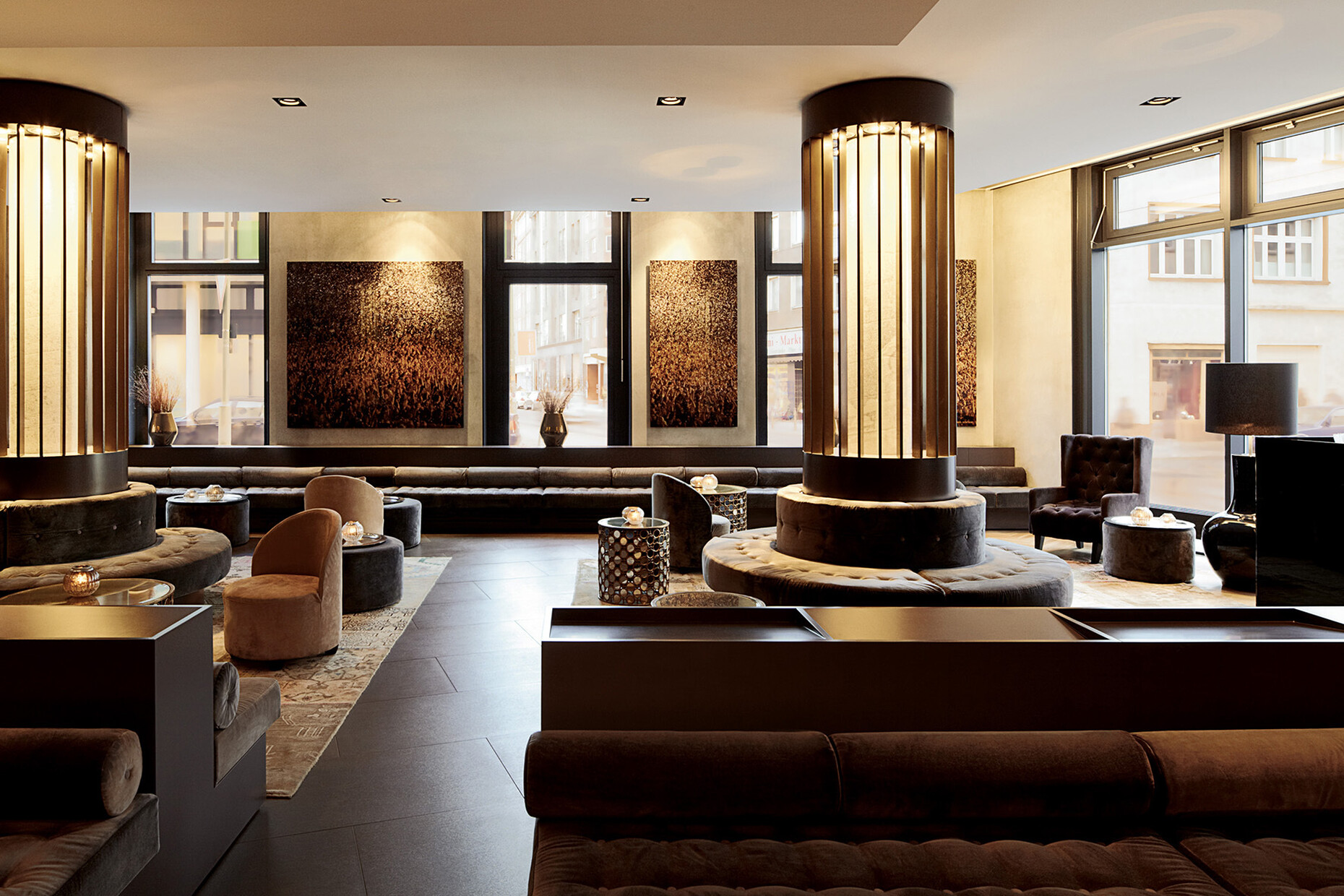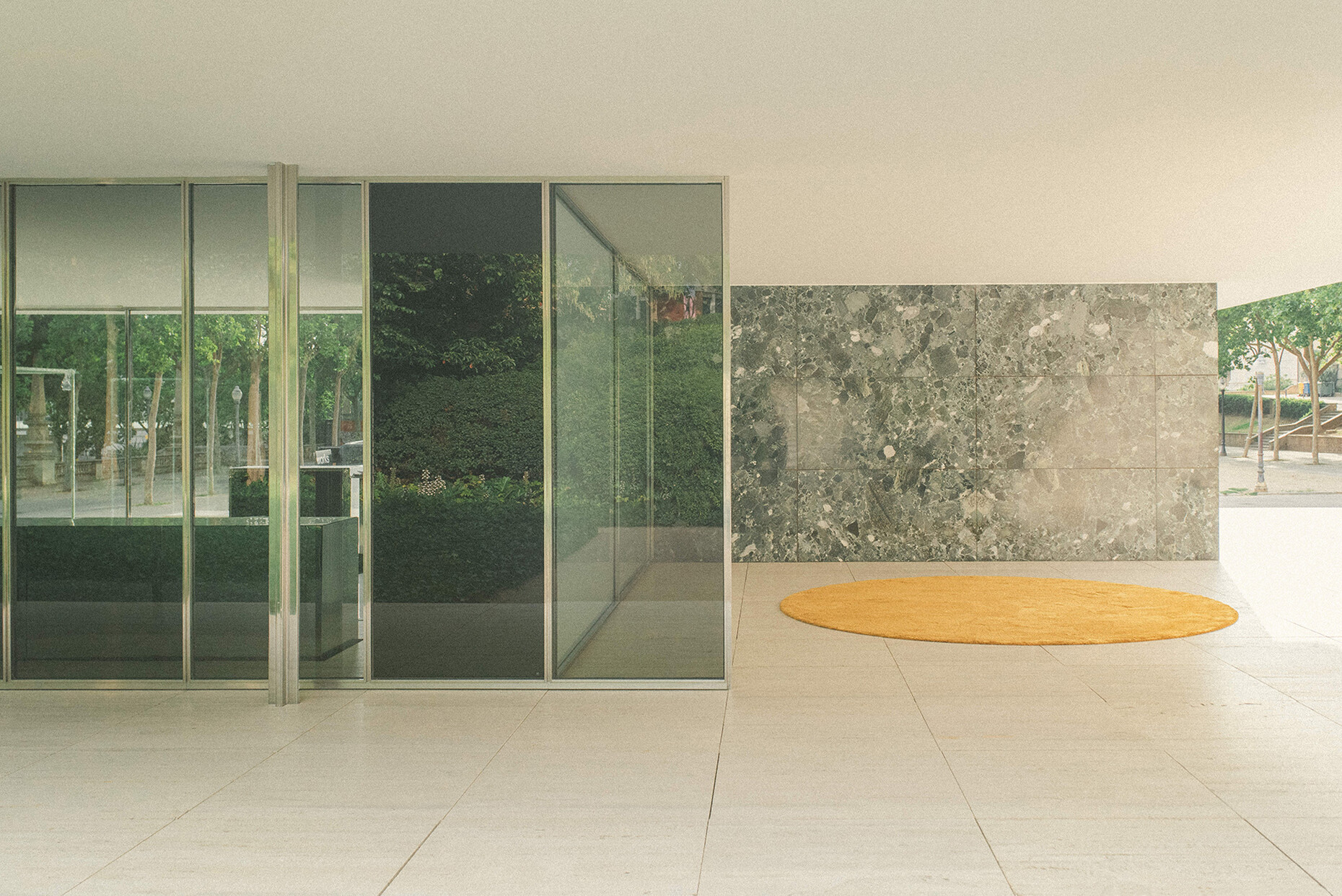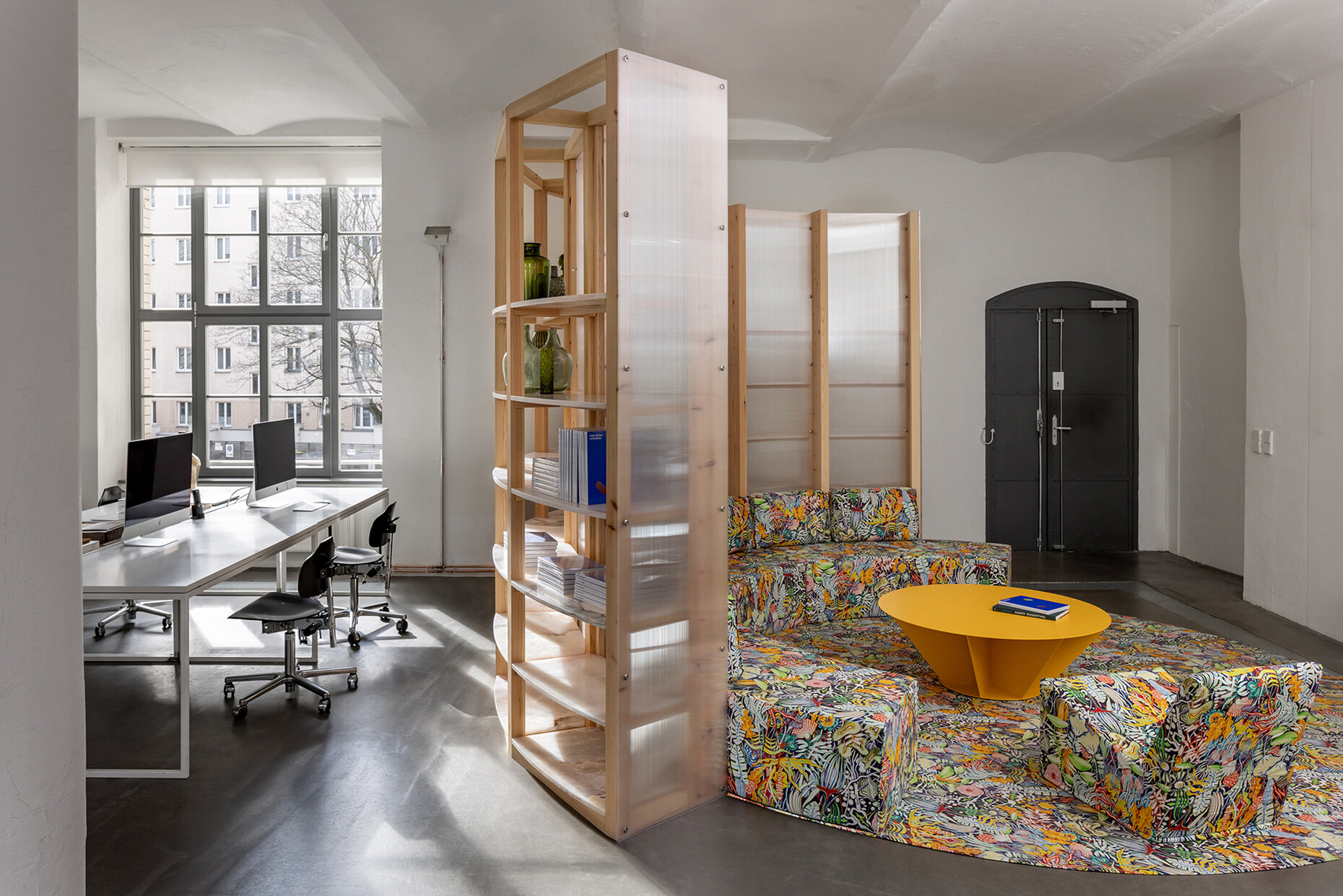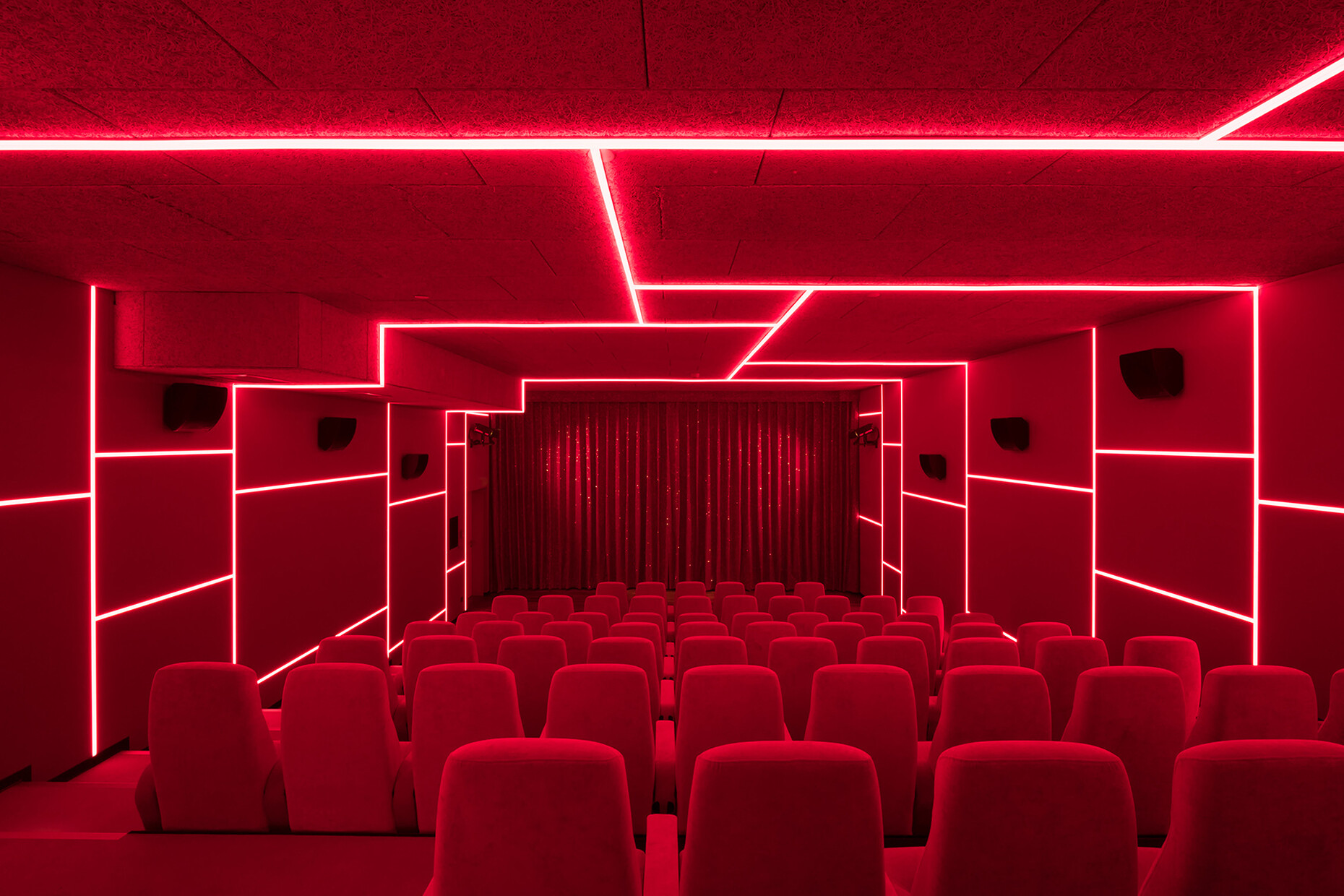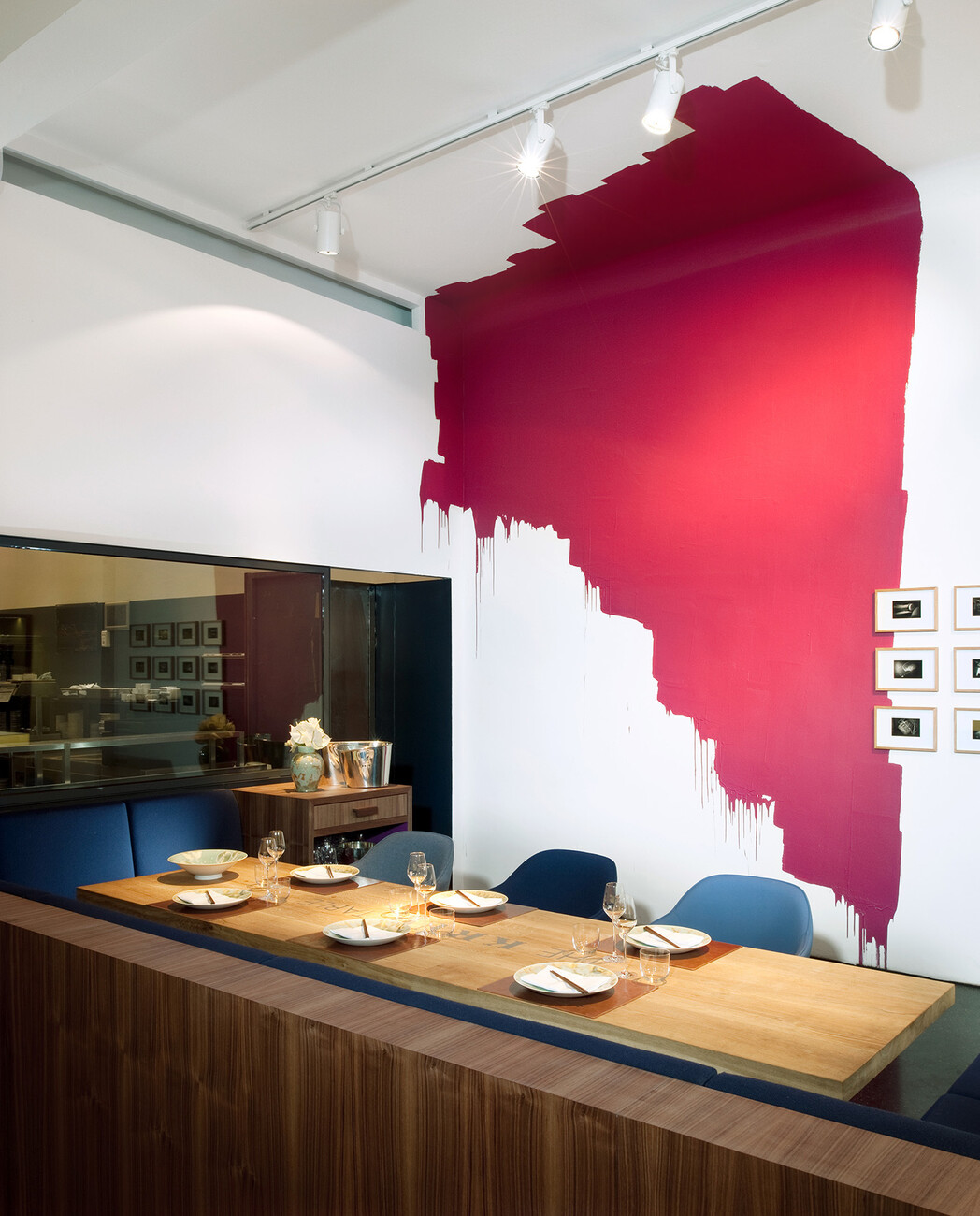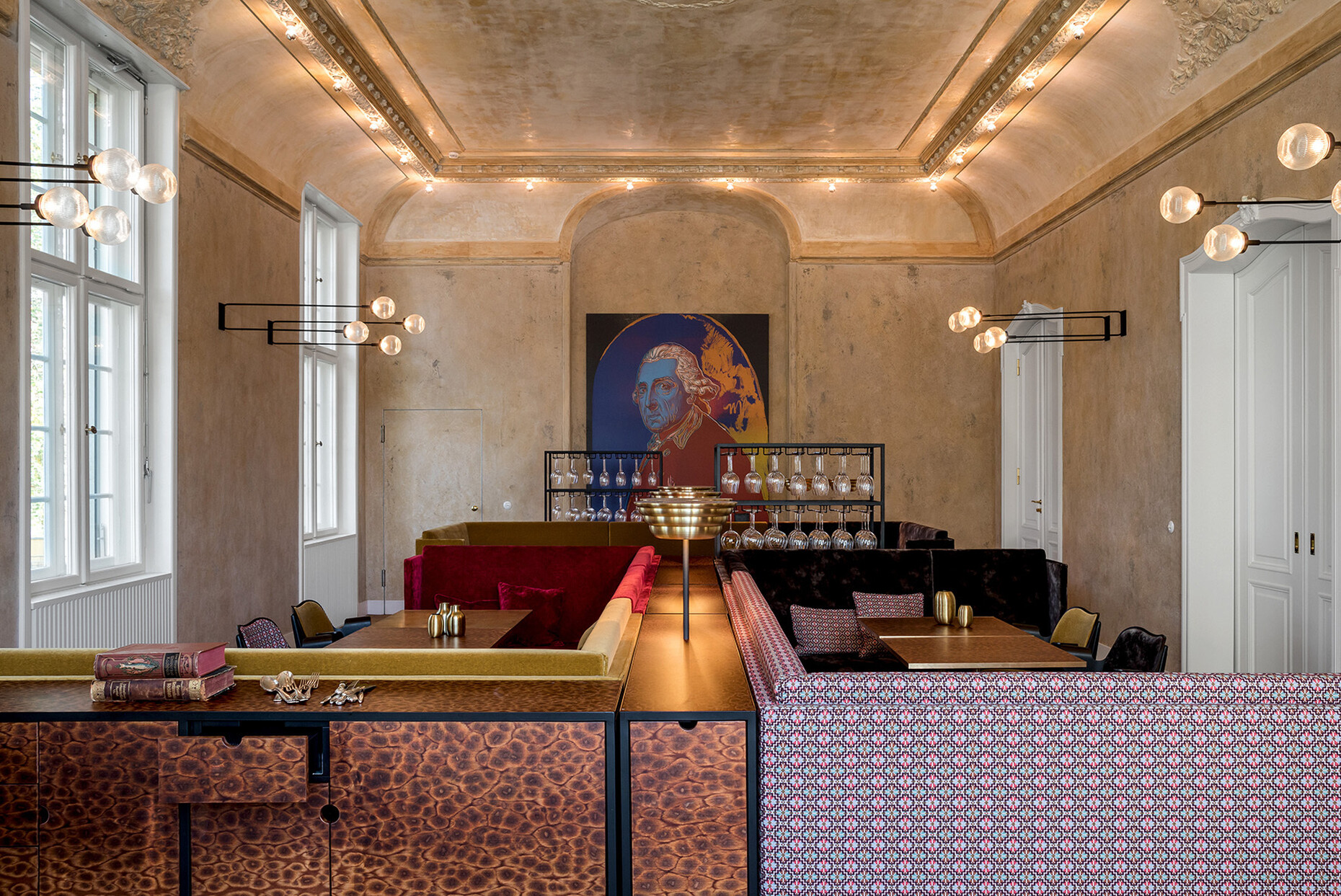SPOTLIGHT ON WOMEN ARCHITECTS
Queen of Contrasts
In Ester Bruzkus’ penthouse you would just love to sink into the pink velvet sofa with its cute fringing. The architect’s private apartment with a view out over the rooftops of Berlin features innumerable color and material contrasts, truly summarizing her style in a nutshell: minimalistic yet at the same time opulent. This coziness, the visual and tactile surprises – they are the very reasons why Ester Bruzkus is commissioned by managers of cafés and hotels, by corporations and banks. Only recently, the Berlin-based native of Haifa, who runs her office together with husband and office partner Peter Greenberg, completed a lounge area for a heritage-listed post office hall on behalf of PSD Bank. When it came to the furnishings the architects demonstrated a sense of local loyalty and opted for chairs by Löhr, rugs by Nomad Carpets and Reuber Henning, as well as furniture by Objekte unserer Tage, New Tendency, and Milena Kling.
Yet current projects likewise include the 1,500 square meters of converted living space in a historic villa in Grunewald (yet to be named) or the innovative office of Berlin start-up Relaxound. "We are not artists. Our projects are intended to be used and have to function accordingly," comments Ester Bruzkus when describing how she sees her role as an architect. And she adds: "Beauty is so important and all too often gets forgotten. People enjoy living and working more in a space with contrasting materials."
Ester Bruzkus ventured into freelance work in 2002 immediately after completing her studies at Berlin Technical University, despite the fact that shortly after the turn of the century things did not exactly look rosy for architects in the German capital. "Back then many of the other graduates in my cohort went to London or Paris, to start working in renowned practices," recalls Ester Bruzkus. However, she bucked the trend and after short intermezzos at Massimiliano Fuksas in Paris and Zvi Hecker in Tel Aviv she went to work on her own interior projects, which helped to shape the face of post-Reunification Berlin. One example is her design of the Amano Hotel and the Amano Bar. "At the time nobody could have imagined that locals and tourists would enjoy a drink side by side in a hotel bar," Ester Bruzkus comments. "Yet that is precisely what has happened ever since Day One. Unlike the unofficial basement clubs it was a full-blown bar that really transformed the area."
Ester Bruzkus’ projects illustrate Berlin’s development from a downtrodden dingy city to a cosmopolitan hub. From the elegant Delphi Lux cinema via the prize-winning Generator Hostel on Oranienburger Strasse, and the restaurants of Michelin-starred chef Tim Raue, her work reflects the changes the German capital has since undergone. Not that she doesn’t realize projects in other German cities, too. Even though the project company is insolvent, she is currently hoping that construction work on a Nobu Hotel in Hamburg’s Elbtower will nevertheless get the go ahead, which she planned in collaboration with David Chipperfield Architects. Clients are Hollywood star Robert de Niro and super-chef Nobu Matsuhisa. Their concept: a luxury hotel with a marvelous restaurant.
However, it needn’t always be pomp and splendor for Ester Bruzkus. She recently designed an Ibis budget hotel in Münster using simple devices such as colored wall cladding, carpets with a tiger print, and fair-faced concrete columns. She would also be interested in planning attractive looking social housing, ideally interspersed with top-end owner-occupied apartments – a mixture which she feels is found far too rarely in Germany. And she is also fascinated by the idea of converting office buildings from the 1990s into living space. "When I work on an existing building it gives me butterflies," she says. "There are so many alternatives to demolition."
Ester Bruzkus and Peter Greenberg find the inspiration for their work on their "architecture nerd trips." Most recently, her thirst for discovery took her to Texas, where among other things she looked round Donald Judd’s legacy in Marfa. "His warehouse with 100 aluminum boxes is the most beautiful thing I have ever seen," she says. The architect has 60,000 photos on her smartphone, including images taken during her trip to India five years ago. Whenever she needs new ideas for combining colors and materials she simply browses through her photos.
In 2023, Ester Bruzkus realized a project close to her heart which was unrelated to commercial use and for once did not feature any striking contrasts: She spent a day in the Barcelona Pavilion by Mies van der Rohe and Lilly Reich, one of her favorite buildings, replacing the original black carpet with a mirrored surface and boxes. Another exhibition project now stands in her own office. Inspired by the design "Living room for a working couple" by Berlin architect Harry Rosenthal dating from the 1920s she designed a round seating niche with a bold pattern. These days the exhibit is put to a very pragmatic use, serving as a practical meeting area for Ester Bruzkus and her team.


